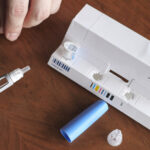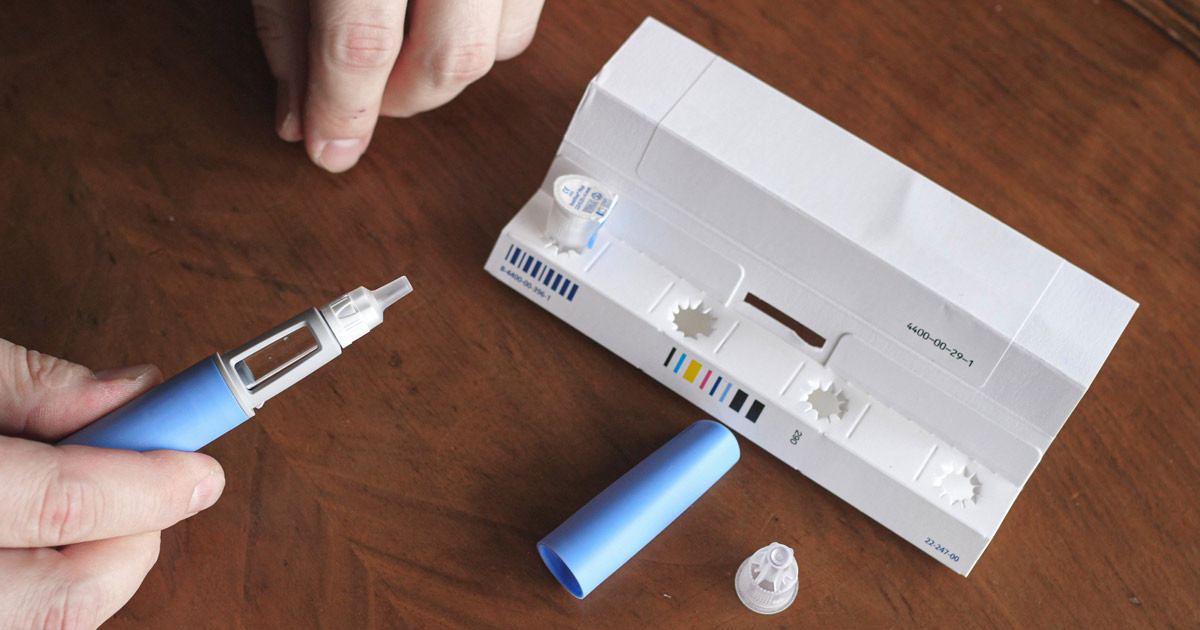August 11, 2025
5 min read
The number of periprosthetic humeral shaft fractures is on the rise related to the increasing performance of shoulder arthroplasty (especially reverse shoulder arthroplasty) in an aging population with more medical comorbidities.
The treatment of these injuries includes nonoperative and operative (open reduction and internal fixation or revision arthroplasty) options and depends on the fracture location relative to the humeral stem, quantity and quality of bone proximally, and implant stability. Unlike native humeral shaft fractures, the nonoperative treatment of periprosthetic humeral fractures is associated with a higher rate of failure, with up to 50% risk for nonunion. Hence, surgery should be considered as an option, especially if the fracture is displaced, the prosthesis is unstable or the patient requires the use of the upper extremity for mobilization and activities of daily living (ADLs).

Source: Niloofar Dehghan, MD; Midhat Patel, MD; and Michael McKee, MD
Classification, treatment options
The unified classification system can help guide management. Fractures involving the tuberosities are classified as type A. Fractures near the tip of the humeral stem are classified as type B, which are further broken down into B1 if the stem is stable, B2 if the stem is loose and B3 if the stem is loose and there is associated bone loss. Fractures well below the stem are classified as type C. Interprosthetic fractures between a shoulder arthroplasty stem and elbow arthroplasty stem are classified as type D.
Implant stability is important to assess, as it helps guide treatment. In general, type A fractures are treated nonoperatively. Nonoperative treatment of type B1 fractures is an option; however, the literature suggests a high risk for nonunion — up to 50%. Surgical intervention for type B fractures depends on stem stability: If the stem is unstable (ie, types B2, B3) revision of the stem is required. However, if the stem is stable (B1) the fracture can be treated with open reduction and internal fixation. Type C fractures are treated similarly to non-periprosthetic fractures: Surgery if there is significant displacement and nonoperatively if the alignment is acceptable. Type D fractures are typically treated with surgical fixation of the interprosthetic fracture.
Surgical planning
If the decision is made to proceed with internal fixation of a periprosthetic humeral fracture, it is important to have appropriate revision implants available in case the prosthesis is found to be loose intraoperatively and revision arthroplasty is required.

Source: Niloofar Dehghan, MD; Midhat Patel, MD; and Michael McKee, MD
The following will detail the steps for surgical fixation of type B1 periprosthetic humeral shaft periprosthetic fractures (stable humeral stem). These fractures can occur around a short or long humeral stem. Fractures around a short stem can be more challenging to fix due to limited bone stock proximally.
Techniques of fixation
The patient is placed semi-sitting on a radiolucent OR table. A beach chair positioner may also be utilized with an attachment to secure the head in place, especially for more proximal fractures or anticipated revisions. The C-arm can be introduced from the contralateral side or from the foot of the bed. It is helpful to mark the site of the fracture and the distal end of the humeral stem on skin, and ensure the incision is made long enough to expose adequately both proximal and distal to the fracture site.
Typically, a deltopectoral approach is used, as it is extensile and allows for spanning the entire length of the humerus. The deltopectoral approach is also ideal if the stem is found to be loose and revision arthroplasty is required.
Dissection is carried down between the deltoid and pectoralis major muscles to expose the proximal humerus. The cephalic vein is usually retracted laterally, and the biceps is retracted medially. Distally the brachialis is split to expose the distal humeral shaft. The radial nerve can be identified distally between brachialis and brachioradialis, especially if cerclage cables or sutures are placed around the humerus, or if fracture mobilization is required.
Once the fracture is exposed, surgical fixation is performed based on AO principles of fixation. If the fracture is comminuted, bridge fixation can be utilized. If the fracture pattern is simple, then anatomic reduction and fixation is performed following reduction with clamps. A 3.5-mm lag screw is utilized if the fracture is amendable to lag screw fixation. Then a neutralization plate is utilized to span the fracture proximally and distally (Figures 1 and 2).
Relative to lower extremity periprosthetic systems, plate options are limited for upper extremity periprosthetic fractures. If the fracture is around a short stem, we have utilized a proximal humeral plate with flanges around the tuberosities. This allows for multiple points of fixation proximal around the prosthesis and, most importantly, allows for fixation at different axis points (Figure 2). Obtaining sufficient proximal fixation is one of the main difficulties with this injury. Given the humeral stem in the canal, placement of bicortical screws is not usually possible. Options are to place transcortical screws around the prosthesis or unicortical locking screws. The use of cerclage wires/cables or suture cerclage is another option to add further stability if sufficient fixation cannot be achieved with screws alone.

Source: Niloofar Dehghan, MD; Midhat Patel, MD; and Michael McKee, MD
If the fracture is around a standard or long stem, then a large fragment 4.5-mm compression plate is used, which is placed anteriorly or laterally. Fixation distally is rather straightforward with use of bicortical 4.5-mm screws. Proximally, however, it is difficult to plate 4.5-mm screws around the humeral implant; hence we use 3.5-mm screws proximally. However, a washer may be required to prevent the screws from pulling through the 4.5-mm hole in the plate. Another option is the use of locking inserts that make the hole smaller to prevent the screw from pulling through (depending on the manufacturer). Some manufacturers also have off axis inserts that can be added, which allow for insertion of off axis transcortical screws around the implant. While we are unaware of any dedicated periprosthetic humeral plates, we have found the use of a large fragment utility plate as a good option. This plate has staggered holes proximally, which allows for insertion of locking and non-locking 3.5-mm screws proximally around the implant, and 4.5-mm screws distally (Figure 1).
If bone quality is suboptimal, a cortical strut allograft can be added as a second biologic plate (Figure 3). While the cortical strut may not fully incorporate, it allows for spot welding to the native cortex, which provides improved stability long term. We typically use a bivalved humeral shaft or tibial strut allograft, which can be placed at 90° or 180° from the humeral plate. The allograft can be secured to bone with use of cerclage wires/cables or suture cerclage (Figure 3). Careful attention should be paid when placing cerclage wires/sutures around the humerus to stay directly on bone and prevent injury to the neurovascular structures, especially the radial nerve, which is at risk at the midshaft of the humerus. If the strut allograft is placed 180° to the plate, then screws can be placed from the plate into the graft. Placement of too many screws can cause the graft to split, so only use a minimum number of screws (usually no more than two screws on either side of the fracture).
The goal of fixation should be to achieve sufficient fixation to allow patients gentle use of the arm right away, especially for ADLs, such as feeding and dressing themselves.
Postoperative care
Postoperatively the patient should be allowed immediate motion of the shoulder and elbow and use of the arm for ADLs. Depending on the fixation construct, use of the arm for mobilization (such as use of a walker) should be considered if required.
References:
For more information:
Niloofar Dehghan, MD, can be reached at niloofar.dehghan@thecoreinstitute.com.
Michael McKee, MD, can be reached at michael.mckee@bannerhealth.com.
Midhat Patel, MD, can be reached at mpatel927@gmail.com.









